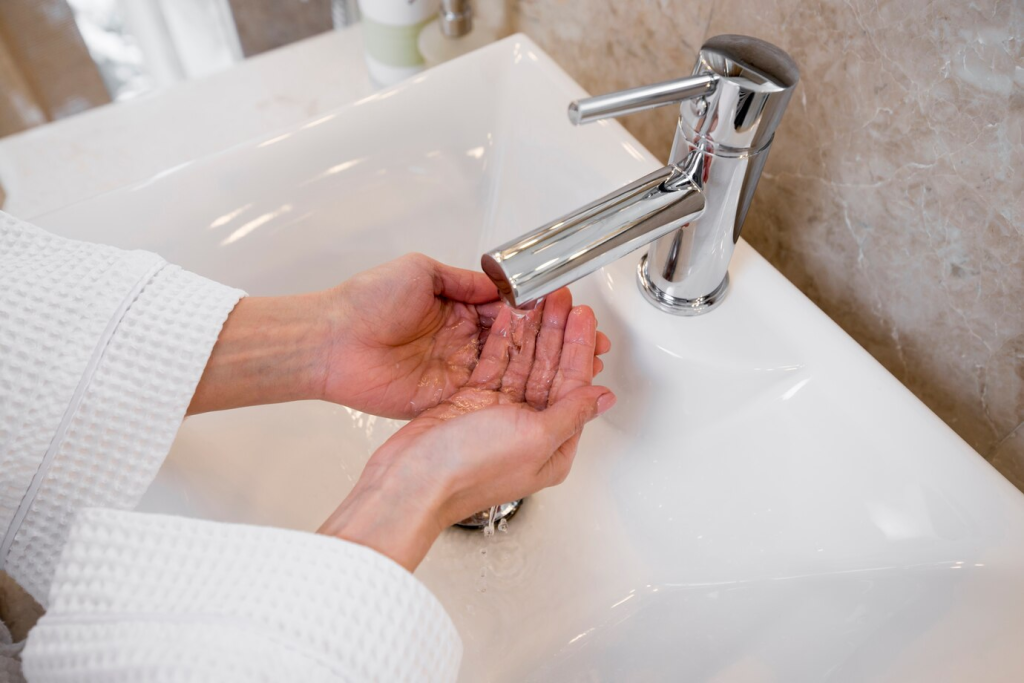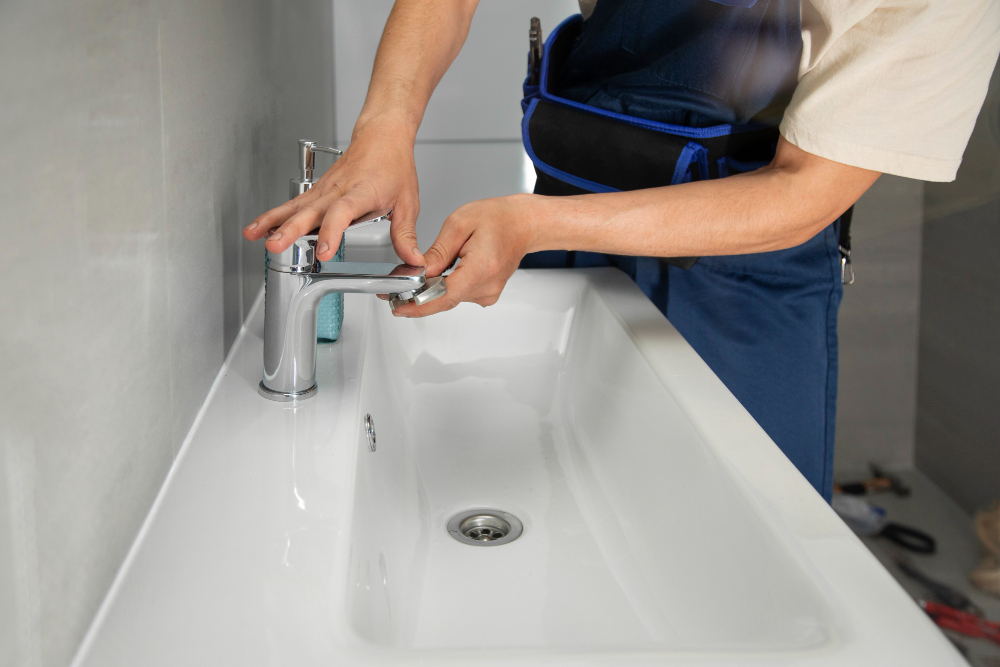Are you struggling to find the ideal bathroom faucet with a sink that not only meets your functional needs but also complements your design preferences?
This guide unravels the complexities, offering insights into finish choices, size considerations, and other crucial factors to help you achieve the perfect bathroom ensemble.
Table of Contents
ToggleBathroom Sink with Faucet: Choosing the Right Size and Configuration
When choosing a bathroom sink with a faucet, these considerations guarantee a well-fitted and harmonious installation.
Match the Faucet and Sink Size
The faucet should be proportionate to the sink, with the spout reaching the middle of the basin and positioned at an appropriate height from the vanity or countertop.
Spout Height and Projection
Consider the spout height and projection to ensure a proportional look. Spout designs vary from standard short curves to tall, arched styles.
Number of Holes in the Sink
Align the faucet configuration with the sink’s hole count. Sink and faucet configurations may differ, so knowing the sink setup is crucial before making a purchase.
Sink Depth
Tailor the faucet size to the sink’s depth. Smaller sinks require compact fixtures, while vessel-style sinks demand taller faucets to extend over the bowl.
Matching Finishes
Ensure the faucet finish complements other bath or shower fixtures. In powder rooms, consider matching it to the cabinet hardware for a cohesive look.
Bathroom Sink with Faucet: Material and Finish
Material
Opt for high-quality bathroom faucets crafted from brass, be it solid or cast.
Brass ensures durability, reliability, and easy maintenance, making it an ideal choice for long-lasting performance.
Other Materials
Stainless steel and zinc are alternative materials used in faucet construction.
Stainless steel boasts durability and scratch resistance, while zinc serves as a cost-effective substitute for solid brass.
However, zinc faucets may not match the longevity of brass counterparts.
Finish
Consider the faucet finish for both style and protection. Common finishes like chrome, nickel, and brass each have unique qualities.
Chrome offers versatility and popularity, nickel combines durability with elegance, and brass finishes, though pricier, deliver durability and effortless maintenance.
Bathroom Sink Faucet Components and Types

Components
Faucets consist of several components, each playing a vital role.
The handle, controlling water flow and temperature, comes in single or double types. The aerator, a mesh, reduces splashing.
The mount supports the faucet on the sink.
The body, available in single-hole, two-handle, and three-hole types, holds water before release.
The spout, with unique designs, is the water outlet.
The valve manages water flow, while the cartridge regulates it for single or double handles.
Types
Single Hole Faucets
Ideal for smaller bathrooms, providing precise temperature control. Requires only one hole in the sink or countertop.
Centerset Faucets
Requires a 4-inch center hole, available with single or double handles, offering versatility in design.
Widespread Faucets
Features three separate pieces with handles and spout mounted separately. Requires three holes in the sink or countertop, available in various handle configurations.
Vessel Faucets
Specifically designed for vessel sinks, these taller faucets accommodate the sink’s elevated height.
Wall-Mounted Faucets
Mounted on the wall above the sink, these faucets require a separate valve and drain assembly. Ideal for contemporary or minimalist bathroom designs.
Personal Preference
Choosing a bathroom faucet and sink involves personal preferences that significantly impact the overall look of the room.
The finish, shape, and quality of the faucet contribute to the visual appeal, aligning with design themes like modern, classic, or unique styles.
Personal choices of finishes like chrome, brushed nickel, or oil-rubbed bronze can create a cohesive bathroom theme.
Key Takeaway
When selecting a bathroom sink faucet, factors such as size, configuration, material, and finish should be carefully considered to ensure a perfect fit for the intended space and harmonize with the bathroom design.
However, size and configuration considerations include ensuring the faucet doesn’t extend too far over the sink, with the water stream hitting near the basin center.
Evaluating factors like ease of use and environmental impact, such as water-saving features, is essential in making a personal choice.


